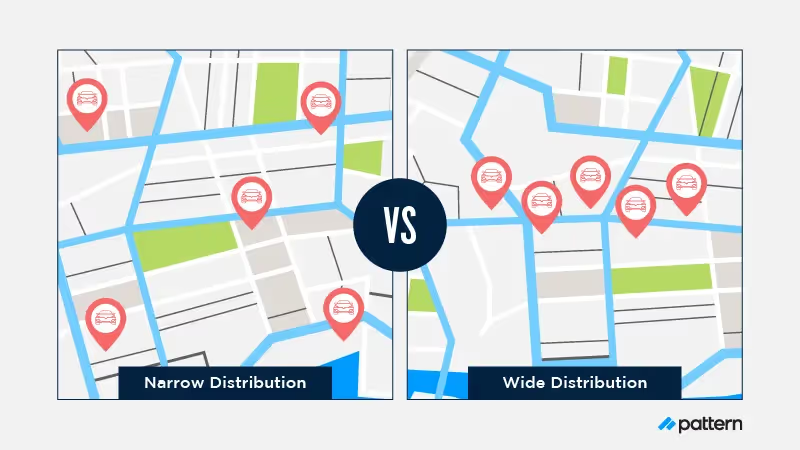How Wide Distribution Impacts Your Brand on Amazon
In retail, you want to go wide, but on Amazon you want to optimize for one seller. Learn how your retail strategy affects Amazon.
Brands are incentivized to set up many points of distribution (big box, wholesale, specialty, boutique, distributor, et al.) in order to maximize revenue. But wide distribution offline causes challenges on Amazon and could lead to price erosion and unhealthy ecommerce marketplace competition. Pattern is an ecommerce accelerator who knows how to stop this death spiral. We partner with brands to identify, develop, and control their distribution strategy to drive ecomwide distributionmerce marketplace success on Amazon and beyond. Let’s focus on how to optimize your retail distribution to achieve control.
Narrow Distribution Explained
Many times the goal in retail is to get your products in as many stores as possible. This is wide distribution. Narrow distribution means fewer overall sellers who adhere to specific pricing policies and promotions. In narrow distribution, a brand geographically separates all sellers in order to take control and increase profitability.
Wide vs. Narrow Distribution–An Example
But why is narrow better than wide distribution, which is generally the strategy for brick and mortar—more placement means more eyeballs, which means more sales, right? Not necessarily–it means more price competition. As an example, take a car brand, say Honda. Honda puts all of its dealers in one town on one block. A buyer starts at Dealer A and gets a quote. Then the buyer continues down the block to Dealer B, Dealer C, and onward, simply asking, “How much?” The dealers keep undercutting each other to win the sale, reducing any profitability. Sold to the lowest offer. In wide distribution, where everyone competes on price, the buyer wins.

Why Wide Distribution Backfires Online
Wide distribution backfires for brands online where customers have full price transparency on all ecommerce marketplaces. How many times have you been shopping online but before clicking “buy” did a quick search to price compare? Just like our Honda example, the only thing ecommerce marketplace sellers have to compete on is price, creating an automatic incentive to lower the price just slightly to win sales and accidentally start a price erosion waterfall. In the digital landscape, if one seller lowers their price online, another will always match that price, so a brand must implement narrow distribution to avoid losing sales and driving down price on all ecommerce marketplaces, like Amazon.
Win the Amazon Buy Box with Narrow Distribution
In retail, you want to go wide, but on Amazon you want to optimize for one seller. Amazon optimizes for a one seller approach by giving them control of the Buy Box. The seller wins the Buy Box by winning the Amazon algorithm which, among other things, is a combination of price, consumer reviews, and customer service. Pattern works with brands to create and execute a narrow retail strategy on Amazon and other ecommerce marketplaces so brands can control other sellers and identify the primary seller who will win the Buy Box. Contact Us today and learn more about narrow distribution with a 3P partner.


.jpg)





.jpg)

